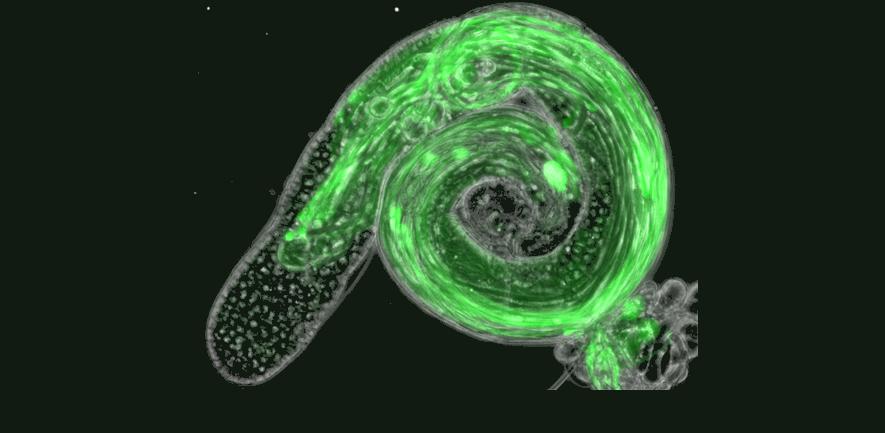
Submitted by Rachel Aucott on Mon, 04/02/2019 - 16:53
γ-Tubulin Ring Complex Heterogeneity Revealed by Analysis of Mozart1
Regulating the formation of new microtubules in both space and time is critical for a wide variety of cell processes and is mediated in part by the recruitment of γ-tubulin ring complexes (γ-TuRCs) to specific microtubule organising centres (MTOCs). This combined phase contrast (greyscale) and fluorescence (green) image shows a whole Drosophila testis expressing endogenously-tagged sfGFP-Mozart1, a recently-discovered γ-TuRC component. Although it was assumed that Mzt1 was essential for cell division, this image shows that Drosophila Mzt1 is absent from the stem cells and the mitotically dividing spermatogonia at the apical tip of the testis. While there are relatively low levels of Mzt1 in the meiotic spermatocytes, the strongest signal appears in the developing spermatids that ultimately form very long sperm. By analysing Drosophila Mzt1 in these spermatids, we showed that Mzt1 is a tissue- and MTOC-specific γ-TuRC component, demonstrating heterogeneity in γ-TuRC composition that sets a precedent for future studies.
Corinne A. Tovey, Chloe E. Tubman, Eva Hamrud, Zihan Zhu, Anna E. Dyas, Andrew N. Butterfield, Alex Fyfe, Errin Johnson, Paul T. Conduit. (2018). γ-TuRC Heterogeneity Revealed by Analysis of Mozart1, Current Biology, Volume 28, Issue 14, p2314-2323.e6, ISSN 0960-9822, https://doi.org/10.1016/j.cub.2018.05.044.
Image by PhD student Corinne Tovey
Conduit Lab
